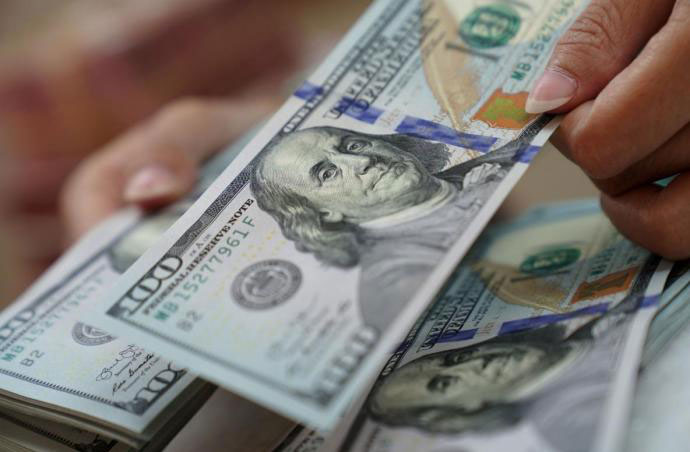Goldman Sachs predicts that even without additional tariffs, the effective tariff rate in the United States will still increase by about 15 percentage points, which will cause the US GDP growth rate to drop sharply to 0.5% in 2025, and the probability of the economy falling into a full recession in the next 12 months is as high as 45%. Under the tariff baseline scenario, it will accelerate to around 3.5% in the next six months. If growth is slightly better than expected and inflation concerns remain, the Fed may not cut interest rates this year.

Goldman Sachs' latest report issued a severe warning about the US economic outlook: the US economy is approaching zero growth this year, and inflation expectations have been significantly raised to around 3.5%. Goldman Sachs also believes that the US dollar is still overvalued by about 20%.
According to the Shanghai Securities News, during the US stock market on April 9, Eastern Time, US President Trump posted on the social platform that he had authorized a 90-day tariff suspension for some countries, during which tariffs were significantly reduced to 10%.
After Trump announced a 90-day suspension of some tariffs, Goldman Sachs withdrew its recession forecast, which was released less than two hours ago. However, in its latest report, Goldman Sachs said that this does not mean an optimistic outlook.
The US economy is approaching zero growth, and the risk of recession is high
According to Goldman Sachs' forecast, even without additional tariffs, the US effective tariff rate will increase by about 15 percentage points, which will cause the US GDP growth rate to drop sharply from 2.5% in 2024 to 0.5% in 2025 (on a quarterly year-on-year basis).
Goldman Sachs said that although it will not cause a full recession, economic growth will slow significantly. The report shows that the risk of recession still exists, and the probability of the US economy falling into a full recession in the next 12 months is as high as 45%.
The report said that the labor market is crucial. Although the March employment report was solid and the number of initial unemployment claims remained low, hiring activities may be further reduced in an extremely uncertain business environment.
Goldman Sachs predicts that the unemployment rate will rise to 4.7% by the end of 2025, and the risk is biased towards a larger increase. Currently, the US unemployment rate is 4.2%.

Inflation outlook is worrisome: tariffs will push up prices
Goldman Sachs expects the core personal consumption expenditures (PCE) price index to rise 2.52% year-on-year based on March consumer price index (CPI) and producer price index (PPI) data, but in the tariff baseline scenario, it is expected to accelerate to around 3.5% in the next six months.
The report said the key issue is the stability of long-term inflation expectations. Multiple surveys show a clear rise in inflation expectations, while market-based inflation indicators remain consistent with the Fed's 2% target. Fed officials need more data to assess whether tariff-driven price increases should be viewed as a one-time level change or a more persistent rise in inflation.
Goldman Sachs' baseline scenario predicts that the Fed will cut interest rates by 25 basis points in June, July and September to address the risk of a more severe downturn in the labor market.
If growth is slightly better than expected and inflation concerns remain, the Fed may not cut interest rates this year.
If the economy falls into a recession and unemployment rises sharply, we may see the Fed cut interest rates by more than 200 basis points, and historically, 400-500 basis points are usually cut during recessions.
Goldman Sachs believes that from a probability-weighted perspective, the market still underestimates the extent of rate cuts in the coming year.

The outlook for the US dollar has deteriorated significantly
Goldman Sachs' foreign exchange strategists are very pessimistic about the outlook for the US dollar, especially relative to the yen, euro and Swiss franc, the report said.
Even after the depreciation in the past two months, the broad trade-weighted US dollar index is still 20% above its long-term average.
Goldman Sachs pointed out that more importantly, the shift to protectionism has weakened the prospects for US growth overperformance, not only in the short term but also in the long term. This gradual deterioration in the relative economic performance of the United States may have a greater negative impact than a full-scale recession, which will further harm the US dollar.
Risk Warning and Disclaimer
The market is risky and investment should be cautious. This article does not constitute personal investment advice, nor does it take into account the specific investment objectives, financial conditions or needs of individual users. Users should consider whether any opinions, views or conclusions in this article are suitable for their specific situation. Invest at your own risk.
